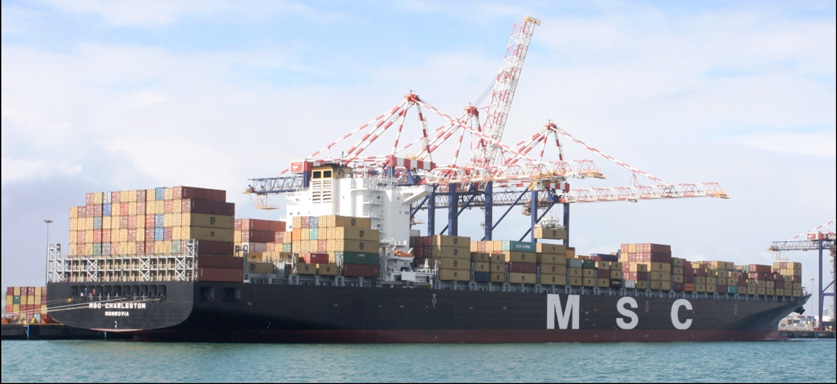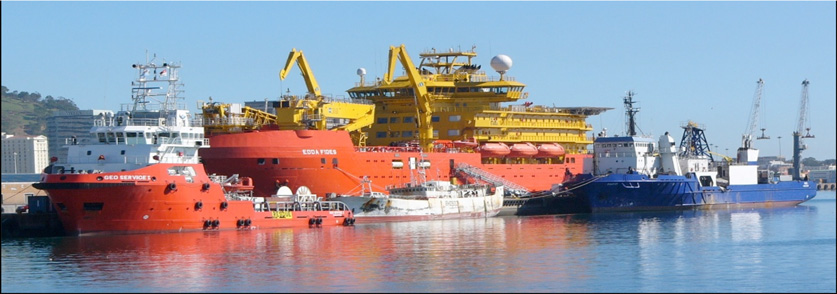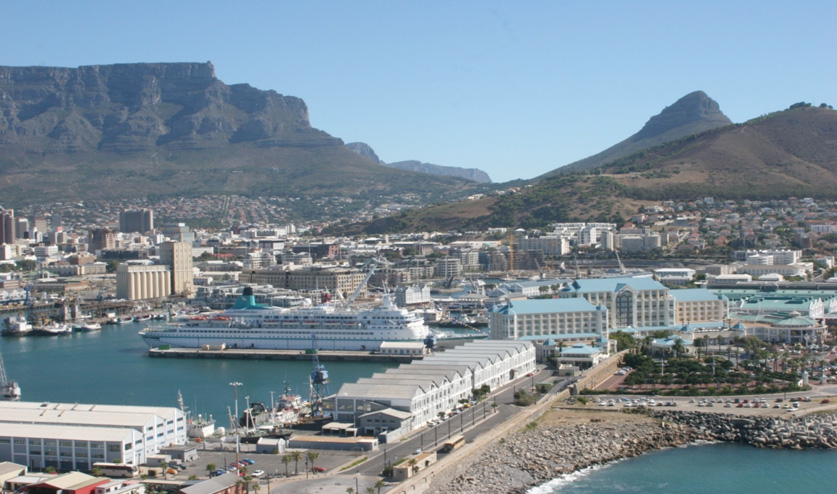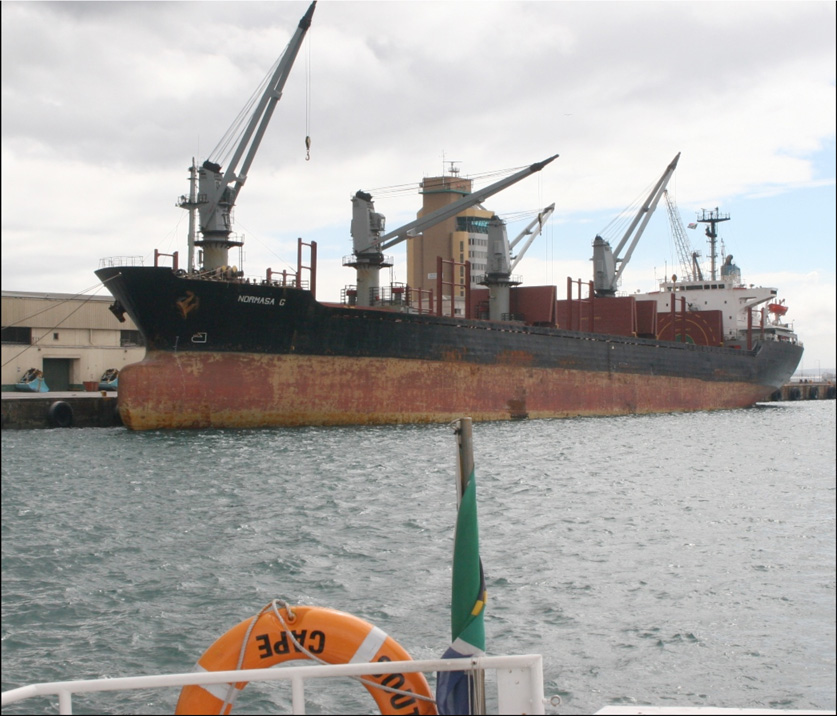| Exports | Imports |
| Containers (esp reefer containers with fruit and fish) | Containers |
| Fruit (bulk in reefer ships) | Grain |
| Oil Products | Machinery |
| Fish (frozen, canned, fish meal) | Oil Products |

Cape Town’s Container Terminal was completed in 1977 in time for the introduction of the fully-containerised service between South Africa and Europe. An upgrade of the terminal involved strengthening the terminal surface to hold more containers, to move the wharf frontage into deeper water and to support larger container gantries. Photograph : Brian Ingpen

One of the major roles of Cape Town is as a bunker port and also a ship repair centre. These ships are bunkering or undergoing refit. Photograph : The late Aad Norland

Rejuvenation of disused and decrepit areas of Cape Town harbour has transformed the area – known as The Waterfront – into Africa’s premier tourist destination. Hotels, shopping malls, restaurants, upmarket flats and offices now are located where the old, run-down buildings once stood. The cruise ship, Albatross, is shown berthed at the Waterfront, an ideal berth for such vessel that brought hundreds of tourists right into the heart of the Waterfront. However, bureaucratic decisions by the Department of Home Affairs now force cruise ships to berth in the Duncan Dock at Cape Town. Photograph : Andrew Ingpen

Cape Town’s harbour has changed in terms of wharf usage. B Berth (shown here) was once the harbour major fruit export berth. As the fruit is now exported in containers, the berth is no longer required for loading fruit into reefer ships. Therefore, the berth is now used to handle grain imports (as shown here). Photograph : Brian Ingpen

